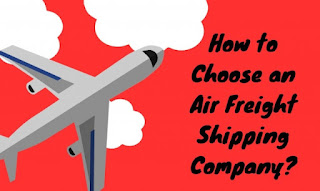Understanding Last Mile Delivery Challenges and Solutions
Last-mile delivery is the final step in the supply chain, where a package is delivered from a distribution center or warehouse to the customer’s doorstep. It is often considered the most complex, time-consuming, and expensive part of the delivery process. Understanding the challenges and solutions associated with last-mile delivery is critical for businesses looking to optimize their logistics.
Key Challenges of Last-Mile Delivery
High Costs
- Cost Contribution: Last-mile delivery accounts for up to 53% of the total shipping cost, mainly due to the inefficiency of delivering individual packages to multiple locations.
- Factors Contributing to Cost: High fuel consumption, driver wages, and inefficient routes, especially in rural or remote areas, increase overall operational expenses.
Inefficient Routes and Traffic
- Unpredictable Traffic: Congested urban areas make it difficult for delivery drivers to follow planned routes, causing delays and increasing fuel consumption.
- Complex Delivery Routes: Delivering to multiple locations, especially in densely populated areas, can be inefficient without route optimization.
Failed Deliveries
- Customer Unavailability: One of the main reasons for failed deliveries is customers not being at home to receive the package, leading to additional delivery attempts and increased costs.
- Address Issues: Inaccurate or incomplete addresses can cause delays or failed deliveries, resulting in higher costs and a negative customer experience.
Scalability During Peak Periods
- Seasonal Demand Fluctuations: The demand for deliveries spikes during holidays or sales events, straining logistics networks and leading to delays or increased costs.
- Capacity Constraints: During high-demand periods, logistics providers may face capacity shortages, leading to increased delivery times and customer dissatisfaction.
Customer Expectations for Fast and Free Shipping
- Growing Expectations: With e-commerce giants like Amazon offering same-day or next-day deliveries, customer expectations have skyrocketed, putting pressure on businesses to provide faster, cheaper deliveries.
- Free Shipping: Offering free or low-cost shipping increases conversion rates but adds to the financial burden on companies, particularly for last-mile delivery.
Environmental Impact
- Carbon Emissions: The growing number of deliveries, especially in urban areas, contributes to higher carbon emissions, making last-mile delivery less sustainable.
- Inefficiency: Multiple deliveries to different locations using traditional fuel-based vehicles increase the environmental footprint.
Effective Solutions for Last-Mile Delivery Challenges
Route Optimization Technologies
- Use of AI and Machine Learning: Advanced route planning tools use AI and machine learning to optimize delivery routes based on factors like traffic, distance, and the number of stops. Solutions like Onfleet, Routific, and Circuit help minimize driving time, fuel consumption, and delays.
- Dynamic Route Adjustments: Real-time data from GPS and traffic reports can enable dynamic changes to routes, helping drivers avoid traffic and make faster deliveries.
Use of Local Delivery Hubs
- Micro-Warehousing: Establishing local distribution hubs or micro-fulfillment centers closer to customers allows for faster and more efficient deliveries. This reduces delivery distances and times.
- Dark Stores: Retailers are increasingly using “dark stores” (retail locations repurposed for e-commerce fulfillment) as local hubs to speed up last-mile delivery.
Crowdsourced Delivery Networks
- Gig Economy and Crowdsourcing: Platforms like Uber, Dunzo, and Swiggy Genie leverage gig workers to deliver packages, offering faster and more flexible deliveries, especially for last-mile services.
- Flexible Workforce: Crowdsourcing provides an elastic workforce that can be scaled up or down based on demand, reducing the need for permanent delivery staff.
Automated and Autonomous Solutions
- Drones and Autonomous Vehicles: Companies like Amazon and Google Wing are experimenting with drone deliveries to reduce delivery times and costs. Similarly, autonomous delivery robots are being tested in urban areas for small parcel deliveries.
- Smart Lockers: Delivery to smart lockers located in convenient locations (e.g., apartment buildings, malls) allows customers to pick up their packages at their convenience, reducing failed deliveries and delivery attempts.
Real-Time Delivery Tracking and Communication
- Customer Notifications: Offering real-time tracking, delivery notifications, and estimated time of arrival (ETA) updates via SMS or apps improves transparency and ensures customers are available when their package arrives.
- Live Route Tracking: Providing customers with the ability to track the driver’s route in real-time helps reduce missed deliveries and enhances the overall customer experience.
Flexible Delivery Windows and Scheduling
- Scheduled Delivery Slots: Allowing customers to choose a specific delivery time or window ensures they are home when the package arrives, reducing the chances of failed deliveries.
- On-Demand Delivery: Offering same-day or next-day delivery options, coupled with flexible delivery slots, improves customer satisfaction and reduces missed deliveries.
Sustainable Delivery Solutions
- Electric Vehicles (EVs): Adopting electric vehicles for last-mile delivery reduces the environmental impact and long-term fuel costs. Companies like Amazon and Flipkart are increasingly investing in EV fleets.
- Bike and Foot Deliveries: In densely populated cities, using bikes, e-bikes, or even foot deliveries helps reduce traffic congestion, fuel consumption, and emissions.
Enhanced Address Validation Systems
- Address Verification Tools: Integrating address validation software into the checkout process ensures accurate and complete address information, reducing failed deliveries due to incorrect addresses.
- Location-Based Services: Using GPS coordinates for accurate address validation in areas with poorly defined street addresses (common in rural areas) can improve delivery accuracy.
Conclusion
Last-mile delivery remains one of the most challenging aspects of modern logistics due to high costs, inefficiencies, and increasing customer expectations. However, with advancements in technology, such as route optimization, autonomous delivery solutions, and local delivery hubs, businesses can significantly improve last-mile delivery performance. By adopting innovative strategies, companies can reduce costs, improve delivery speed, and enhance customer satisfaction while addressing the environmental impact of logistics operations.


Comments
Post a Comment